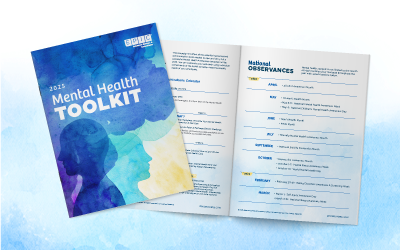Viewpoints from Patrick Gallagher
A measles outbreak that began in West Texas quickly spread to close to 900 cases in 29 states, resulting in three deaths. Even at current immunization rates, measles may become endemic again – circulating in the U.S. – within two decades, according to new research published in the Journal of the American Medical Association. With even small declines in vaccination, this could happen more quickly. Conversely, small increases would prevent this.
During the COVID pandemic, employers with the largest workers’ compensation risks were those providing essential services in industries with high exposure to members of the public, like supermarkets. Employees who became infected were statutorily assumed to have contracted the virus at work, triggering claims.
The measles outbreak presents a similar set of risks, but the two viruses pose the following distinct differences.
Locality: Unlike COVID, which grew to a global pandemic in under four months, measles outbreaks are hyperlocal and often clustered in small communities, spreading in pockets of unvaccinated people. Measles spread rapidly in high-density, close contact settings. But since most people are vaccinated, it burns out faster than COVID, staying localized unless it reaches another unvaccinated cluster.
Contagiousness: Measles is far more contagious than COVID. It lives in the nose and throat mucus of an infected person who can spread it to others by coughing or sneezing, according to the Centers for Disease Control and Prevention. Because it spreads through tiny particles that can linger in the air for two hours, a person simply needs to breath contaminated air or touch an infected surface and their eyes, nose, or mouth, to become infected. If a person has measles, up to 90% of the people close to them, who are not immune, will become infected, according to the CDC.
Long-Term Complications: The risk of measles is especially concerning since workers who contract the disease may face lingering health issues that lead to further absenteeism and additional workers’ compensation claims. That’s because measles causes “immune amnesia” meaning the immune system forgets how to fight off infections that is successfully dealt with before. Harvard Magazine reports that this phenomenon causes “exceptionally high rates of co-infections and hospitalizations for bacterial pneumonias and related conditions,” according to researcher Michael Mina, former assistant professor of immunology and infectious diseases at Harvard Medical School and of epidemiology at the Harvard T.H. Chan School of Public Health. This heightened vulnerability to other infections and diseases is particularly pronounced during the first two months following recovery.
Vax status: While there wasn’t a vaccine to stop the initial spread of COVID, two doses of measles vaccine are 97% effective at preventing measles and one dose is 93% effective. People born before 1957 are considered immune due to widespread natural exposure before vaccines became more available. The Occupational Safety and Health Administration recommends developing an infection control plan that addresses sources of measles exposure and provides infection prevention measures, such as immunizations, to reduce risk.
For more insights on food industry-related risk, visit our Food & Beverage industry page.
Related Content
About EPIC
We are a unique and innovative retail risk management and employee benefits insurance brokerage and ...
Industries
Successfully managing risk is the most effective strategy to protect and grow your business. We help our ...
Industries
Food & Beverage
In the business of food and beverage, there is only one objective, to deliver excellence. Our brokers with ...



